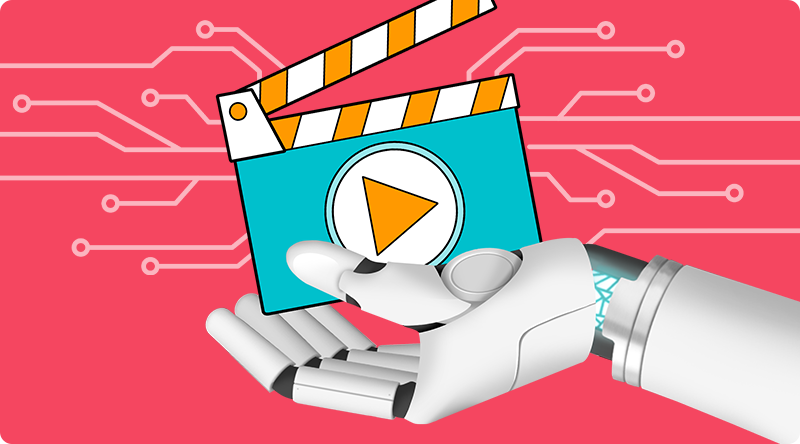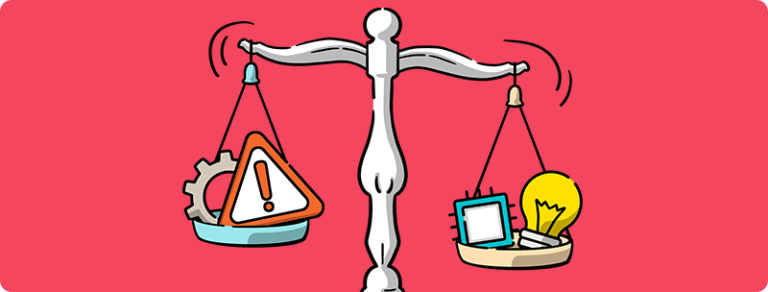AI-powered animation: The future of dynamic and personalized storytelling
Written by Natasha | 12th January 2024

Animation breathes life into stories by translating ideas into visual storytelling. It catches the audience’s imagination, bringing characters and settings to life. From television shows to movies, this graphic format has been vital to telling stories for a long time.
Artists working with traditional animation spend hours creating and coloring each frame. This artistic and technical technique requires an immense amount of talent and patience. But now that AI-powered animation is available, quicker and more effective methods have come into play.
Table of Contents
The animation industry is changing due to AI technologies. It expands the creative options and gives stories a personal touch that was before unthinkable. Join us as we explore how AI technology is reshaping the animation industry.

AI Breakthroughs in Storytelling
This section delves into the advancements AI provides to animated storytelling. It details how AI adds more depth to stories and opens up a more comprehensive range of options in animation.
Simplifying Storyboard Creation
AI automates storyboard creation, transforming it. These tools use complex algorithms to look at scripts and make visual representations quickly. It lets filmmakers and animators immediately visualize their ideas, speeding up the production process.
The software efficiently converts written content into storyboard frames using machine learning (ML) and computer vision. This speeds up the brainstorming process so creatives can quickly change and visualize scenes. Doing so lets your employees focus on sharing stories instead of making storyboards by hand. simpleshow’s Story Generator is an excellent example of effective AI-powered script writing.
Improving Character Dynamics
Thanks to AI-powered technology, how characters interact in animation is becoming increasingly accurate. Because of powerful algorithms, animated characters now act and talk in ways that closely resemble real-life dynamics. This advancement improves the viewing experience and gives the characters fresh energy.
Now, consider the new opportunities this presents. Like highly developed chatbots, AI-driven characters converse with customers and generate creative concepts realistically and flexibly. This latest advancement in interactive storytelling enables individualized and engaging interactions, completely changing how people interact with virtual characters.
Creating Immersive Experiences
Blending virtual reality (VR) with animation powered by AI is creating unparalleled storytelling experiences. Users become active adventure players by entering VR worlds, moving beyond observation. AI algorithms play a critical role here, adjusting the story to the user’s preferences and actions, resulting in a unique and engaging experience.
For instance, consider a VR fantasy game where players experience a world brimming with myths. In this realm, AI changes the story and how the characters interact with each other based on what the player does and how they move. This degree of customization guarantees that each experience in the virtual space is unique and increases user engagement.

Designing AI-Driven Environments
AI is changing how animated scenes look by making them more realistic, full of rich details, and stunningly natural. Algorithms create convincing virtual environments from real-world data. Thus, individuals pursuing a game design degree will find these data-driven landscapes very helpful since they provide unprecedented realism and depth. Some AI-powered animation software even has the potential to transform 2D images into complex 3D models.
This significant step forward helps writers, design students, and individuals learn animation. It opens up new ways to be creative, letting people make huge, complicated worlds that were only possible in their minds before.
Handling AI-Powered Animation Challenges
A unique set of challenges arises when integrating AI tools with animation, which companies must navigate carefully. Ensuring creativity and technology work well while respecting artistic freedom is a serious job. This section highlights various issues to help you understand how AI influences animation:

Balancing Creativity and Automation
Integrating AI techniques in animation is a huge challenge since it requires balancing technical efficiency and human creativity. The tool quickly develops ideas and adapts content for specific groups. Still, it must match humans’ emotional breadth and creative insights. Therefore, animators must avoid this situation, ensuring AI enhances creativity rather than taking it over.
Ensuring Quality and Consistency
It’s tough to guarantee that AI-generated animations consistently maintain high quality since AI can provide unexpected results. Although helpful, these tools sometimes lack the complex judgment to ensure standards are identical in all scenes. Animators are crucial in monitoring and optimizing AI outputs to preserve high-quality results.
Adapting to New Technology and Skills
Another obstacle is adapting widely used animation techniques to bring in cutting-edge AI technology. This creates a skills gap, making it hard for creative people who need to be tech-savvy to use AI-powered animation apps successfully. Collaborative workshops and continuous training can help artists overcome this skills gap and effectively incorporate AI tools into their creative process.

Frequently Asked Questions
What is AI-powered animation, in simple terms?
AI-powered animation leverages machine learning to accelerate processes such as storyboarding, improve character actions, create environments based on data, and customize stories for audiences. This approach streamlines production and enhances the dynamism of narratives.
How does AI personalize storytelling for each viewer?
AI adapts scenes, pacing, and interactions to user preferences and actions; in VR, it can reshape the narrative path so each experience feels unique.
Can AI really generate storyboards or turn 2D assets into 3D?
Yes. Tools can analyze scripts to auto-create storyboard frames, and some software can transform 2D images into detailed 3D models.
What are the biggest risks or challenges with AI in animation?
Balancing automation with human creativity, keeping quality consistent across scenes, and closing the skills gap so teams can direct AI effectively. Human oversight remains essential.
How will AI change the role of animators?
Less time on manual tasks; more on creative direction, supervising outputs, and learning new tools often via training and collaborative up-skilling.
AI-Powered Animation: Crafting Tomorrow's Stories
The advent of AI-powered animation opened up new possibilities for creating and consuming animated media, transforming the art of storytelling. More efficient animation, more vivid scenery, and better character dynamics are all results of this technology.
Nonetheless, there are obstacles to overcome, such as preserving artistic integrity, guaranteeing high-quality work, and acquiring new technical abilities. Looking ahead, the relationship between AI and animation will further strengthen, resulting in more imaginative and engaging tales.
People may expect more captivating and individualized storytelling as animators adapt to new technologies. This ongoing progress marks the start of a new age in animation, where technology and creativity merge to bring narratives to exciting new places.
Author's Bio

Natasha is a content marketing specialist who thinks it’s kind of fun creating content marketing strategies for SaaS businesses. In her free time, she likes spending time watching Netflix.
